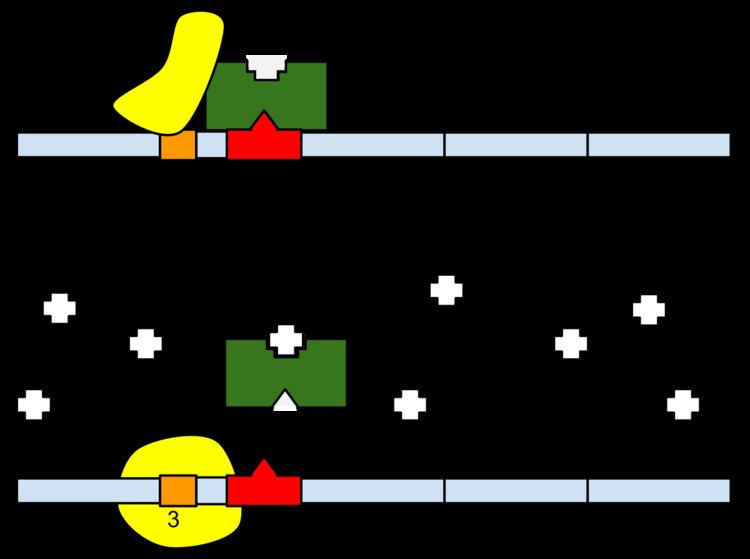 | ||
In genetics, an operator is a segment of DNA to which a transcription factor binds to regulate gene expression by repressing it. The protein that does this is called a repressor. Repressors bind to operators to prevent transcription.
The main operator (O2) in the classically defined lac operon is located slightly downstream of the promoter. Two additional operators, O1 and O3 are located at -82 and +412, respectively.
Mechanism
The repressor protein physically obstructs the RNA polymerase from transcribing the genes.
An inducer (small molecule) can displace a repressor (protein) from the operator site (DNA), resulting in an uninhibited operon.
Alternatively, a corepressor can bind to the repressor to allow its binding to the operator site. A good example of this type of regulation is seen for the trp operon.
